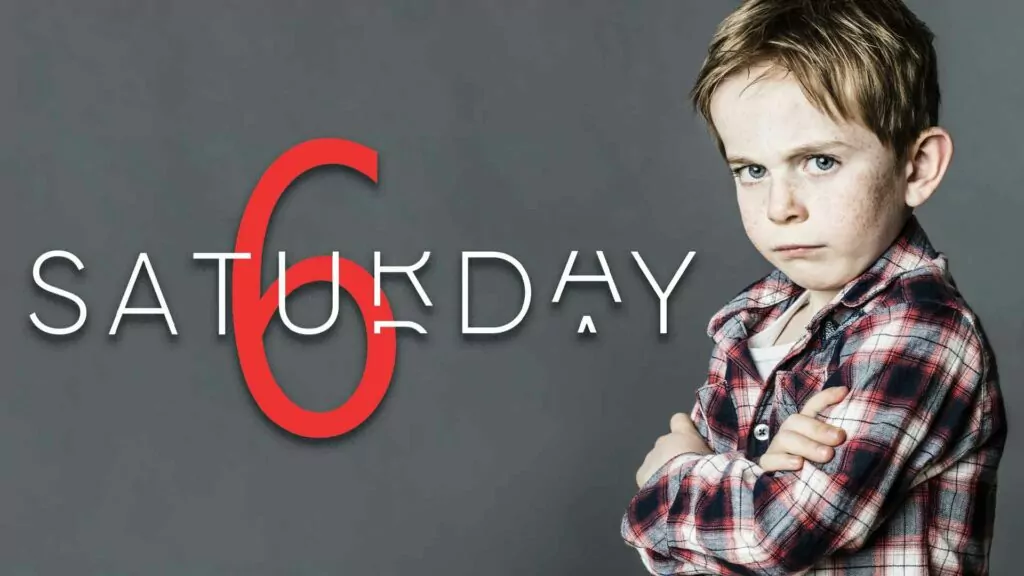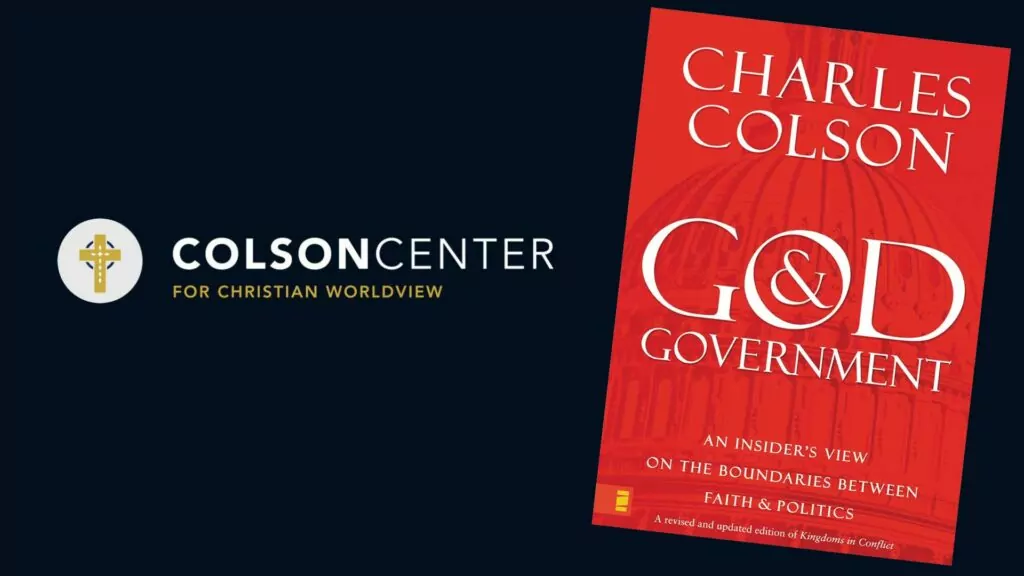
Dating
How to get married younger
If your upbringing was filled with scenes of large families bustling into church, children in the pew ahead coloring over the church bulletin, and babies here and there serenading the sermon with their discontented cries, then, you probably see marriage as a very good thing. And if you’ve seen twenty-somethings making silly and sinful decisions because there are too few expectations on them and too little responsibility weighing them down, then you understand the problems that come with a prolonged adolescence and delaying marriage.
Of course, marriage isn’t the fix for all things wrong in the world, and it does not encompass the entirety of life's pursuits. But marriage is a reflection of a most important truth. In Ephesians 5:25-27, we find a profound analogy where Christ, embodying the ultimate Bridegroom, exhibits sacrificial and unconditional love toward His Bride, the Church, portraying marriage as a sacred covenant reflecting this divine union. Marriage is also an answer to God’s command to be fruitful and multiply, as well as a means to grow His Church.
Get married, then, is a worthy aspiration for God’s people.
So why the delay?
However, the average age of marriage in Canada is now around 30 for both men and women, up from 25 for men and 22 for women back in the 1970s. Christians too, may be delaying marriage, perhaps due to economic challenges. Within urban churches it's quite common to see many working professionals aged 25 and above who are unmarried. With inflation on the rise and the cost of living increasing, supporting oneself is a challenge, let alone supporting a whole family.
Kevin DeYoung's book, Just Do Something, highlights a very different reason for delay: society's struggle with an overabundance of choices. In past generations, it was common for individuals to remain in the same town, work the same job as their parents, and marry someone from their community. Their course was, in large part, set out for them.
Today, however, there is an overwhelming array of opportunities. Upon high school graduation, young people must decide whether to enter the workforce, attend college, or pursue other paths. They may choose to stay at home or move across the country. This plethora of choices can lead to a fear of commitment and a reluctance to settle down, as individuals worry about making the wrong decision. As DeYoung notes, "In many ways, our preoccupation with the will of God is a Western, middle-class phenomenon of the last fifty years." When it comes to discerning God's will for our lives – whether in work, education, or marriage – DeYoung argues against “spiritualizing” our indecision. When you are looking for guidance on what job to pursue, whether to get an education, and who you should date, don’t just sit on your hands waiting on a sign from God. DeYoung instead advocates for committing to a local church community and relying on the discerning wisdom imparted by Christ to you and the wise family members, friends, elders, and pastors, He has put in place to shepherd you.
 Married while in school
Married while in school
One reason I would like to get married some day is because of what I’ve witnessed with my parents, who married young and have celebrated 33 years together.
Peter and Jen Ellison crossed paths through a mutual friend while pursuing their studies at the University of Victoria. Despite a six-year age gap – my mom was 22 and my dad 28 when they walked down the aisle – they were relatively young compared to today’s norms. They were still completing their education, and not at all "established" when it came to their careers, which is why some family members suggested they wait longer. But they didn’t. As my mom explained:
“I loved getting married young because we really didn’t have much, but we were able to build everything together.”
She added that it definitely wasn't easy but, “you need to go into marriage honestly and realistically, realizing that your union is of two sinners both in need of a perfect Savior.”
My mom thought that nowadays the value of marriage is seemingly taken lightly rather than seen as the making a covenant with God. She says that after 33 years of marriage:
“In hindsight the most difficult times of our marriage were when our personal relationship with God was suffering. Rather than running from the relationship we needed to run to the cross of Jesus again and again and actively seek Him.”
Figuring it out together
 In the many conversations I’ve had with Dutch friends from more rural communities, I've noticed young marriages do continue to happen there. Within these close-knit rural settings, traditional values, economic considerations, and strong community support networks play pivotal roles in shaping the decisions of young individuals regarding marriage.
In the many conversations I’ve had with Dutch friends from more rural communities, I've noticed young marriages do continue to happen there. Within these close-knit rural settings, traditional values, economic considerations, and strong community support networks play pivotal roles in shaping the decisions of young individuals regarding marriage.
Gianna Vanderwoude's story exemplifies this trend. She met her husband Devon in Carman, Manitoba where they had attended the same school and church. Over the years, their shared experiences fostered a strong friendship. They began dating at the age of 16, became engaged at 18, and ultimately married at 19. Vanderwoude reflects a prevailing sentiment among young couples in such settings – that there's a unique excitement in marrying young and embarking on the journey of building a life together. She shared:
“I feel like that's one of the benefits almost, because you can begin wherever you are, instead of having to meet in the middle. You just are where you are; you just go from there. And you make decisions based on what works for both of you. With regards to money, Manitoba is a little bit cheaper, but we both worked quite a bit during high school and we're pretty smart in that sense, but it's still challenging.”
Married for about a year now, they have already encountered challenges along the way, particularly with her husband undergoing a career change and enrolling in pilot training. However, the Vanderwoudes find that "it's kind of fun to learn how to navigate that together. We also recently moved away from our families to pursue this training. So, while it's hard, it's also really fulfilling to grow and learn together in new and different environments."
When you graduate from high school, your schedule undergoes a significant shift, whether you choose to attend university or enter the workforce directly. You become accustomed to not seeing your friends every day, as you once did. Vanderwoude suggests that marrying young can serve as a remedy for the loneliness often experienced in one's early twenties.
“I feel like your early twenties can be a little bit lonely because you go from being in high school and university and college and then all sudden, you're off on your own. And if you move you've got to make new friends. So, it's kind of nice to have someone there to grow with. Like a guaranteed best friend.”
Vanderwoude's advice for young Christians is similar to what DeYoung says in one of the final chapters of his book. She notes: “I think people can get super stressed about what God's will is and who the one is for them. When, in reality, there are so many different people out there for you.” DeYoung agrees that, although it might sound unromantic, “Don’t think that there is only one person on the whole planet to whom you could be happily married.” The problem with this idea of "the one" is that it presupposes that affection alone sustains a marriage – you have to find that one special match, because it is that perfect match that will make your marriage work – whereas in reality, it is your commitment to the marriage that preserves the affection.
This underscores just how important it is to test everything against Scripture, especially when you’re in a relationship with ambitions for marriage. Vanderwoude emphasized that point:
"Just really test everything against God's Word. And if you're dating someone, make sure that they align with what God calls us to in His Word, as a partner. Don’t just think, 'They make me laugh.' It's important to ensure that there will be a good fit, especially for a woman seeking a husband, a strong spiritual leader who can guide your family."
How are people meeting?
So how are people meeting today? I found out that singles are still getting set up by mutual friends, Christian conferences are a way to meet like-minded young people, and technology has created some new options.
1. Dating apps and websites
With the emergence of the internet, and online dating apps, the dating market has become astronomically larger, providing the unmarried with access to others singles from all around the world. That can be a good thing, but as DeYoung noted, that can also leave many overwhelmed by these choices, tempted to indecision in the fear of making anything less than the best pick.
While we all know someone who has found success through dating apps, there are issues. These apps may allow a user to swipe through all sorts of potential candidates in short order, but these are people you don’t really know. In most cases all you’ll see is a few photos and a short description. Even as Christians, there is lots of room for temptation and lack of accountability here. Using these apps can lead to many uncomfortable dates, and even unsafe situations if you are not careful.
That being said, I don’t think that we need to avoid online dating sites altogether. Reformed Perspectivehas, for example, featured different online Reformed dating platforms like Sovereign Grace Singles or Tulip Singles. A feature of these websites is that there is an accountability factor. For example, on Tulip Singles, in their “About Us” section they specifically state that “We require our members to provide the name of their church and pastor,” further stating that, “We respect our member’s privacy and do NOT contact a member’s pastor unless they need to be held accountable for inappropriate behavior on the website.”
2. Wingmen still have a role, even online
And, even outside of niche Reformed Christian dating platforms, connections online can happen in the most unexpected of ways.
 If you’re connected to the online world of Reformed Twitter, you may have heard of Zoe Miller – she's a freelance journalist and is also the co-host of her own “Presbygirls” podcast. I met Zoe in the spring of 2022 in Sioux Center, Iowa while we were both attending the WORLD Journalism Institute, a two-and-a-half week intensive training program for Christian journalism students. During this time, Zoe was ecstatic to talk about a single PCA youth pastor she had recently connected with. After long nights of writing, and reporting all day in the small town of Sioux Center, we would come back to the dorms at Dordt University and you could catch Zoe walking through the halls on the phone with her future husband.
If you’re connected to the online world of Reformed Twitter, you may have heard of Zoe Miller – she's a freelance journalist and is also the co-host of her own “Presbygirls” podcast. I met Zoe in the spring of 2022 in Sioux Center, Iowa while we were both attending the WORLD Journalism Institute, a two-and-a-half week intensive training program for Christian journalism students. During this time, Zoe was ecstatic to talk about a single PCA youth pastor she had recently connected with. After long nights of writing, and reporting all day in the small town of Sioux Center, we would come back to the dorms at Dordt University and you could catch Zoe walking through the halls on the phone with her future husband.
I reconnected recently with Zoe, and her now-husband Seth, and asked her how they first met.
“I have this very niche little podcast called Presbygirls that I do with a pastor's wife who is a friend of mine and she and I hosted a show where Rosaria Butterfield was the guest. She was talking about human sexuality issues, which are really popular to talk about in the PCA, which is the denomination that our church is in. And Seth, all the way down in Texas, along with his PCA session, ended up listening to the podcast episode that we did with Rosaria Butterfield because it was relevant to the discussions that were going on.”
During the episode – because they were talking about human sexuality and the theology of singleness – Butterfield asked Zoe if she was single. And Zoe replied “Yes.” Seth had seen Zoe’s posts on Twitter before and became curious about her after listening to this episode. He also talked with one of his friends, a pastor named Mark, about Zoe. Shortly afterwards Mark attended the Gospel Reformation Network, a conference for confessional Presbyterians. Zoe happened to know many people at the conference because of her podcasting work. Zoe explained what happened next:
“During the conference, and some of the social times Mark was going around telling people ‘Oh, yeah, you know, we got this youth pastor down there at Redeemer in Texas that's got a crush on one of the Presbygirls.’ So I got messages from people that I knew at the conference ‘Oh, there's this youth pastor who has a crush on you.’”
Zoe is part of an online group chat where they talk about “nerdy Presbyterian stuff.” She ended up mentioning how she was having people reach out to her about Seth. As church connections happen, one of the guys in this group chat said that he went to seminary with Seth and that they would have a lot of things in common. He then proceeded to send Zoe a bunch of YouTube videos of Seth preaching. As Zoe shared, it was love at first sight: “So I watched the YouTube videos, and I was like, oh, yeah, it's over. It was pretty much over for me at that point.”
This mutual friend then set up a group chat on Discord with Seth and Zoe – she describes him as “a good wingman” because as soon as he saw Zoe and Seth getting along, he left the chat. This led to Zoe and Seth forming a friendship, and then came the phone calls – they were continually calling each other up. As June approached, both had plans to attend the Presbyterian Church of America (PCA) General Assembly in Birmingham, Alabama. Prior to General Assembly, Zoe and Seth had a conversation asking “What are we doing here? What are we trying to accomplish?” Zoe said, “Well, I guess what I think we're doing is eliciting marital compatibility.”
Then, the time had finally come in late June for Zoe and Seth to meet in-person. And as Seth shared, like any first date, there were some nerves.
“You hear all the horror stories about meeting somebody online, and as a real person, you don't know what they're really like, you only see some pictures. There was some fear and trembling before we actually met the first time because it's like, ‘what is this person really like?’ So we actually met at the General Assembly of the PCA…”
During the weekend they were able to talk a lot, as well as have Zoe’s dad and the two pastors Seth was working with “vet” them.
“From that point on,” Zoe said, “it wasn't really awkward to try to figure out, ‘Where are we going to go from here?’ We got engaged in October of that year. And we got married in March of the next year.”
Zoe mentioned she used to find it frustrating when married couples were asked, “How did you know you were supposed to marry your spouse?” and they’d reply with, “When you know, you know.” She said:
“That's not a real good answer. But at this point, they were 100% correct. It's really difficult to convey that to somebody who doesn't actually have that knowledge by experience, but I'm finding out that they were right.”
Zoe spoke about how, when she first went to college, she had visions of graduating and being a single young professional. But she had a perspective change in seeing many smart women in her church get married and start families young. “I kind of conceived of that as something you did if you didn't have any other options, but… I learned that just getting married young is not a waste of time.”
When it comes to advice for young Christians who want to get married, Seth says to get really involved in the local church.
“These years in your early 20s are a great time to really cement your standing as a Christian, really grow a lot, and get involved in the life of the church. When you're focusing on growing as a Christian, focusing on serving in the church, and being a part of the church, a lot of those things just kind of come together on their own.”
3. Wingmen in the offline world
While your church is often an ideal place to meet people, what if there aren't many options within your local congregation? What if you're searching for someone with specific theological interests but options are limited in your city or town?
 Keith Davis, a pastor at Bethel United Reformed Church (URC) in Calgary, Alberta, is also the founder of Summit Reformed Youth Conference (SummitRefCon.ca). This conference, held twice a year in February and August, caters to Reformed singles aged 18-30.
Keith Davis, a pastor at Bethel United Reformed Church (URC) in Calgary, Alberta, is also the founder of Summit Reformed Youth Conference (SummitRefCon.ca). This conference, held twice a year in February and August, caters to Reformed singles aged 18-30.
Originally from Michigan, Davis met his wife while serving at a summer ministry internship in Toronto. She was sending letters to people who were serving in the ministry away from home. Davis was grateful to get a letter.
“You know, as a young man receiving a letter from a young lady from church, you're like, 'Wow, you thought of me.' So, I wrote her back, and we established a bit of a relationship like that. When I got back, I thought she was head over heels in love already. But then I found out that she wrote everybody, and every man who received a letter fell in love with Laura. But I was the one, so we got married quite young.”
Davis was 22, and his wife was 19.
“We love the Lord. We served Him, and what really brought us together was our faith. We had a lot in common; we had many conversations that flowed effortlessly. You know when you speak with someone, and it just feels natural, with no awkwardness? It's what is really needed.”
After serving as a pastor for many years in various churches in the US, he then moved to Calgary and discovered that there were no nearby conferences for youth to attend. They had been attending a conference in Lynnwood, but it ended up costing the church a lot of money. After meeting with the elders of the church, Davis says he began making phone calls to see how he could start their own conference.
They launched the first conference in 2016 and have since hosted conferences almost every year. Their inaugural event attracted 150 young adults, but now they have so many interested individuals that they have to cap attendance at 450 people.
Davis is quick to emphasize that “we’re not a camp; we’re a conference.” The summer conference runs from Monday to Friday, featuring speakers and worship sessions throughout the week. Attendees typically arrive on Monday, with many flying in from both the East and West. Some even travel from as far as Prince Edward Island. In addition to receiving scriptural messages that impart profound truths, attendees also have ample time for building relationships.
Davis observes that within the diverse age range of attendees, older individuals often emerge as leaders and mentors for the younger participants. This fostering of friendships among like-minded individuals also creates opportunities for potential marriages to develop.
“It's definitely about bringing like-minded Christians together in an environment where there's a sense of safety. They don't have to worry too much about whether the other person knows the Lord. There's usually a common commitment there,” he said. “So, that might be one barrier that's removed. Ultimately, though, they still have to discover their own convictions, but we're bringing young people into proximity with each other. If it works out, it works out."
And it has been working. How often? Davis doesn’t know.
“Every church I go to preach, there are those in attendance who tell me they met at Summit and they got married. They come up to me and say, ‘Have you kept track?’ I'm like, ‘No, I don't ever want to keep track.’ I want to protect us from pride because I think it's a natural thing to say, ‘Oh, look what we've done.’ I think that the Lord is pleased to use this conference to many ends; if that's one of them, Amen. The greatest end is that these young people will come to commit their lives to the Lord.”
Some practical pastoral dating advice
Mike Chhangur, a pastor at the PCA’s Christ Church Halifax, got married to his wife in his early twenties. They originally met through a youth ministry in Texas but reconnected a few years later through Facebook.
 Chhangur shared some of the complexities that arose from getting married while not being “established.” His wife had just finished university, and he was still completing nursing school. Chhangur says they moved many times to find the cheapest rent, securing sublets to “save a couple of hundred bucks a month.” At one point, they even shared a two-bedroom apartment with another person
Chhangur shared some of the complexities that arose from getting married while not being “established.” His wife had just finished university, and he was still completing nursing school. Chhangur says they moved many times to find the cheapest rent, securing sublets to “save a couple of hundred bucks a month.” At one point, they even shared a two-bedroom apartment with another person
“We've only ever had one income. When I was in school, Brittany was working more than me. And then when she got pregnant and had our first daughter, Annie, I started working full-time. There's only ever been one person working, and so that's been helpful for us in the sense that we've never bitten off more than we can chew in terms of mortgage or car loans or, whatever.”
1. Make the most of opportunities to connect
When it comes to encouraging Christian singles to marriage, Chhangur says they need a point for connection. For him and his wife Brittany, Facebook provided that touchpoint for them to connect after losing touch. So, as a pastor, Chhanguer says he wants to be able to help with those connections: "One practical way, as a pastor, I'm attempting to create connections among Christians is by hosting events…”
2. Date like a Christian
In addition to forming opportunities for connections, Chhangur emphasizes the need for Christians to date in a way that is God-honoring.
“I think I've just encountered over and over again, where people don't know how to date Christianly. They have no idea what this looks like; they have grown up in an age of Tinder. A lot of people in our experience have started coming to our church while they were still living with a girlfriend or a boyfriend, and have had to figure out, ‘What does it mean to follow Christ in this particular area? What does the Bible have to say about dating and relationships?’”
He continued, “As a pastor, I’m teaching new stories of what it means to treat a younger woman as a sister with all purity. We don't progress in the Christian life from treating somebody like our wife emotionally and physically, and then only later asking them to be our wife.”
3. Men, don’t make an idol out of your ego
Fear of rejection is a significant concern, particularly when there's often an emphasis on men in the church to initiate romantic pursuits. Using a basketball analogy, Chhangur offers advice to young men who may fear rejection for asking a girl out to coffee.
“Eventually you're going to shoot your shot. If you live life avoiding pain, or avoiding rejection at all costs, you're going to have a pretty miserable life. Some of that is this understanding of who you are in Christ, and making that a priority more than being accepted by people. It’ll be sad if you airball the coffee, but that's just life.”
4. Be the godly person a godly someone would want to date
Ultimately, if you are looking for a spouse who loves the Lord, Chhangur says you need to check yourself first.
“A couple of pieces of advice would be if you want a godly wife, someone who hears God and loves the Lord Jesus, you have to be a godly man. A godly woman is attracted to godly men, and vice versa. So I would make sure that your first love is Christ.”
Conclusion
To close, I think some of the most practical guidance given to me was from a young woman who has been married for a couple of years and shared the following when I asked “What advice do you have for single Christian men and women who want to be married?”
- Ensure your heart is in the right place in desiring marriage. It is a good thing, but even good things can become idols.
- Prepare yourself. Don't wait for someone to show up and then start getting your act together. Be prudent with the time given now to continue growing — in habits, in skills, and in discipline, all of which are beneficial to marriage. Be ready.
- Surround yourself with those who have similar values as you. If you desire marriage, keep company with those who value it, whether already married or single.
- Serve God where you are. You're not in a holding room before getting to the real part of life. This is real life right now – live it all for Him!
Or to keep things simple, “Just Do Something.”






























